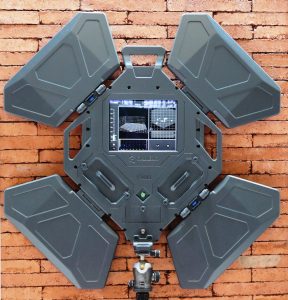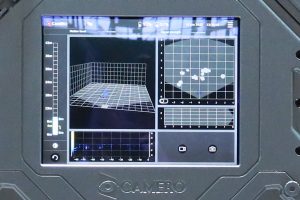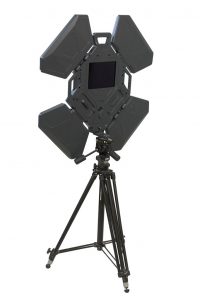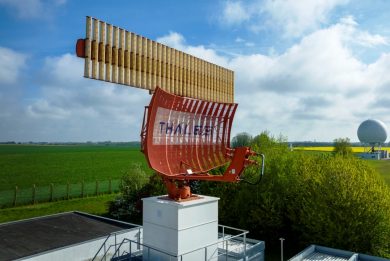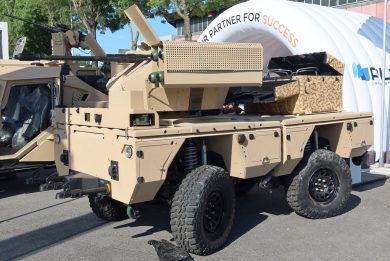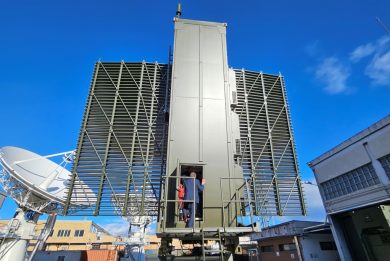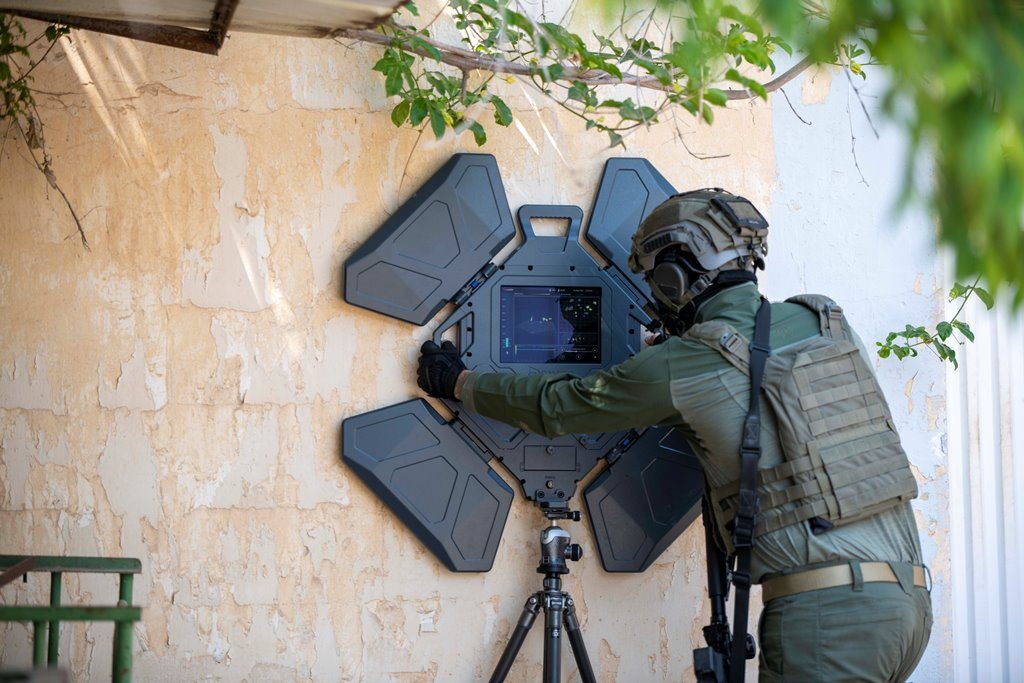
Much improved through-the-wall situational awareness with Camero’s Xaver 1000
A fourth member has joined the Xaver family at Eurosatory, the Xaver 1000. This see-through-the-wall radars series has been developed by Camero of Israel, part of the SK Group, which started with the Xaver 400 2D system, then developing the Xaver 800 3D and the Xaver 100 1D. The new Xaver 1000 allows Camero to provide the operator a much improved understanding of what is happening behind the wall. “The single human being will now not only be identified as such, as it will be possible to distinguish its features, arms, legs, head, in most situations, as well as to measure his height, therefore discriminating between adults, kids and animals,” Amir Beeri, the CEO and founder of Camero tells EDR On-Line. As in the other Xavers, the system is capable to detect the heart beat, hence even living humans at rest can be spotted. However the new member of the Xaver family also allows, thanks to its very high sensitivity, to picture the major static objects present in the room, such as major pieces of furniture, allowing the operator to acquire a much better understanding of the room layout, a key element especially for Special Forces or SWAT teams when they are called to carry out a direct action operation, such as a high value target neutralisation or a hostage rescue.
The situational awareness ifs further improved by the possibility to change the viewing angle of the 3D image, 2D being available both in plain view and side view, range over time allowing to follow the movements of a subject. Compared to the Xaver 800, the Xaver 1000 has a wider field of view both in azimuth and elevation, 120° versus 80°. As for range, this has been more than doubled, as it steps up from 20 to 42 m, the Xaver 1000 being able to penetrate cement, plaster, brick, concrete, reinforced concrete, adobe, drywall and other standard building materials as all the other members of the family.
Usually when performances are considerably increased, this comes at a cost. We will not discuss the price, however as far as complexity of use, dimensions and weight, this is not true for the Xaver 1000. First of all the system is intuitively easy to use. The weight increase is of only 1 kg over 14.5 kg of the Xaver 800, the Xaver 1000 being at 15.5 kg, therefore it falls within the same class, one man easily transporting the system at some distance from the wall through which it must “see” and orienting it accordingly. As for dimensions the antennas must be deployed as in the Xaver 800 in order to ensure maximum resolution; in fact the Xaver 1000 is 1 cm smaller than the older model with antennas folded, 46 x 46 cm, while when deployed it is bigger, 91 x 91 cm versus 84 x 84 cm.
The Xaver 1000 operator is helped by algorithms based on Artificial Intelligence, all commands being input through a touch screen. “To ensure maximum ease of use by operators who underwent basic training, we provide a default set-up that, according to the company, is effective in 80-90% of the scenario,” Amir Beeri says. The operator must therefore get to the deployment spot, rig up the system, deploy antennas, orient them towards the wall, push the “On” button, which activates the system, and leave the area, as all controls can be carried out at distance via a remote unit. Of course expert operators can optimise the Xaver 1000 configuration increasing performances in certain conditions compared to default ones.
According to the company CEO, the Xaver 1000 will be easier to upgrade compared to existing members of the family due a technology change. While former Xavers were based on FPGAs (Field Programmable Gate Arrays), the 1000 hardware is based on GPUs (Graphics Processing Units), which are more modern and flexible in terms of upgradeability, as they are programmable at software level. The new product being therefore software based, the technological step is comparable to that between standard radios and software defined radios. This means that considerable upgrades could be foreseen without touching the Xaver 1000 hardware but simply loading a new software release. Battery powered, it accepts hot-swap and a battery can be reloaded within 3 hours. It can also be powered by external sources, either AC 100-240V 50-60 Hz or DC 15 V, Ethernet, USB and SDI ports being available for exporting images.
Photos courtesy Camero and P. Valpolini

